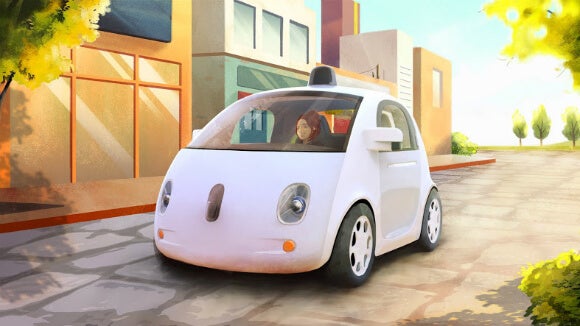It’s not too surprising that the release of images of Google’s prototype robocar have gotten comments like this:
Revolutionary Tech in a Remarkably Lame Package from Wired
A Joy Ride in Google’s Clown Car says Re/Code
I’ve also seen comparisons to the Segway, and declarations that limited to 25 mph, this vehicle won’t get much adoption or affect the world much.
Google’s own video starts with a senior expressing that it’s “cute.”
I was not involved in the specifics of design of this vehicle, though I pushed hard as I could for something in this direction. Here’s why I think it’s the right decision.
First of all, this is a prototype. Only 100 of this design will be made, and there will be more iterations. Google is all about studying, learning and doing it again, and they can afford to. They want to know what people think of this, but are not scared if they underestimate it at first.
Secondly, this is what is known as a “Disruptive Technology.” Disruptive technologies, as described in the Silicon Valley bible “The Innovators Dilemma” are technologies that seem crazy and inferior at first. They meet a new need, not well understood by the incumbent big companies. Those big companies don’t see it as a threat — until years later, they are closing their doors. Every time a disruptive technology takes over, very few of the established players make it through to the other side. This does not guarantee that Google will dominate or crush those companies, or that everything that looks silly eventually wins. But it is a well established pattern.
This vehicle does not look threatening — not to people on the street, and not to existing car companies and pundits who don’t get it. Oh, there are many people inside those car companies who do get it, but the companies are incapable of getting it in their bones. Even when their CEOs get it, they can’t steer the company 90 degrees — there are too many entrenched forces in any large company.The rare exception are founder-led companies (like Google and Facebook and formerly Apple and Microsoft) where if the founder gets it, he or she can force the company to get it.
Even large companies who read this blog post and understand it still won’t get it, not most of the time. I’ve talked to executives from big car companies. They have a century of being car companies, and knowing what the means. Google, Tesla and the coming upstarts don’t.
One reason I will eventually move away from my chosen name for the technology — robocar — along with the other popular names like “self-driving car” is that this future vehicle is not a car, not as we know it today. It is no more a “driverless car” than a modern automobile is a horseless carriage. 100 years ago, the only way they could think of the car was to notice that there was no horse.Today, all many people notice about robocars is that no human is driving. This is the thing that comes after the car.
Some people expected the car to look more radical. Something like the Zoox or ATMBL by Mike and Maaike (who now work in a different part of Google.) Cars like those will come some day, but are not the way you learn. You start simple, and non threatening, and safe. And you start expensive — the Google prototype still has the very expensive Velodyne LIDAR on it, but trust me, very soon LIDAR is going to get a lot less expensive.
The low speed is an artifact of many things. You want to start safe, so you limit where you go and how fast. In addition, US law has a special exception from most regulations for electric vehicles that can’t go more than 25mph and stick to back roads. Some may think that’s not very useful (turns out they are wrong, it has a lot of useful applications) but it’s also a great way to start. Electric vehicles have another big advantage in this area. Because you can reverse electric motors, they can work as secondary brakes in the event of failure of the main brake system, and can even be secondary steering in case of failure of the steering system at certain speeds. (Google has also said that they have two steering motors in order to handle the risk of failure of one steering motor.) Electric vehicles are not long-range enough to work as taxis in a large area, but they can handle smaller areas just fine.
If you work in the auto industry, and you looked at this car and saw a clown car, that’s a sign you should be afraid.
Originally published on Brad’s blog
[Media: Google]




